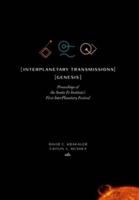Publisher's Synopsis
Aircraft engine combustors generally involve turbulent swirling flows in order to enhance fuel-air mixing and flame stabilization. It has long been recognized that eddy viscosity turbulence models are unable to appropriately model swirling flows. Therefore, it has been suggested that, for the modeling of these flows, a second order closure scheme should be considered because of its ability in the modeling of rotational and curvature effects. However, this scheme will require solution of many complicated second moment transport equations (six Reynolds stresses plus other scalar fluxes and variances), which is a difficult task for any CFD implementations. Also, this scheme will require a large amount of computer resources for a general combustor swirling flow. This report is devoted to the development of a cubic Reynolds stress-strain model for turbulent swirling flows, and was inspired by the work of Launder's group at UMIST. Using this type of model, one only needs to solve two turbulence equations, one for the turbulent kinetic energy k and the other for the dissipation rate epsilon. The cubic model developed in this report is based on a general Reynolds stress-strain relationship. Two flows have been chosen for model evaluation. One is a fully developed rotating pipe flow, and the other is a more complex flow with swirl and recirculation. Shih, Tsan-Hsing and Zhu, Jiang and Liou, William and Chen, Kuo-Huey and Liu, Nan-Suey and Lumley, John L. Glenn Research Center...












